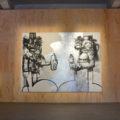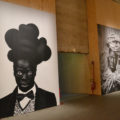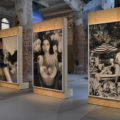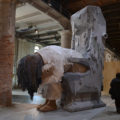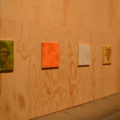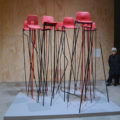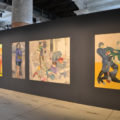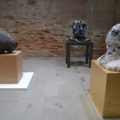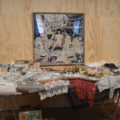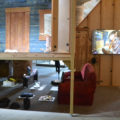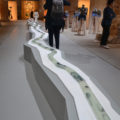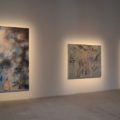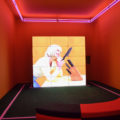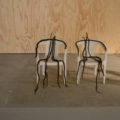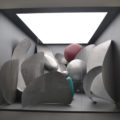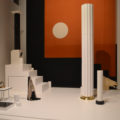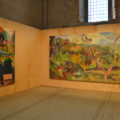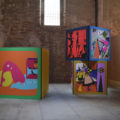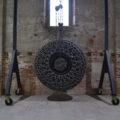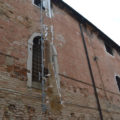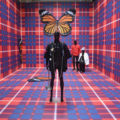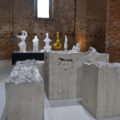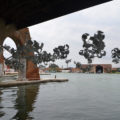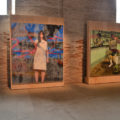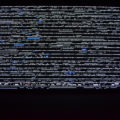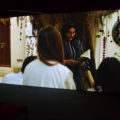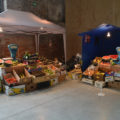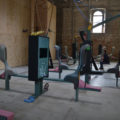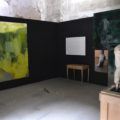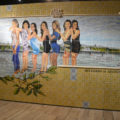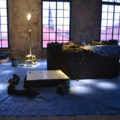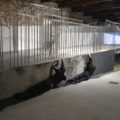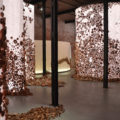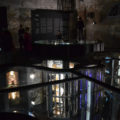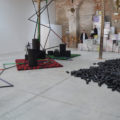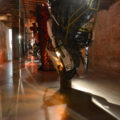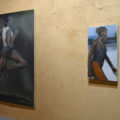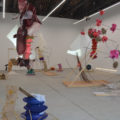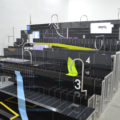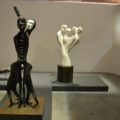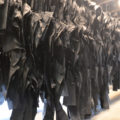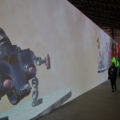[ad_1]
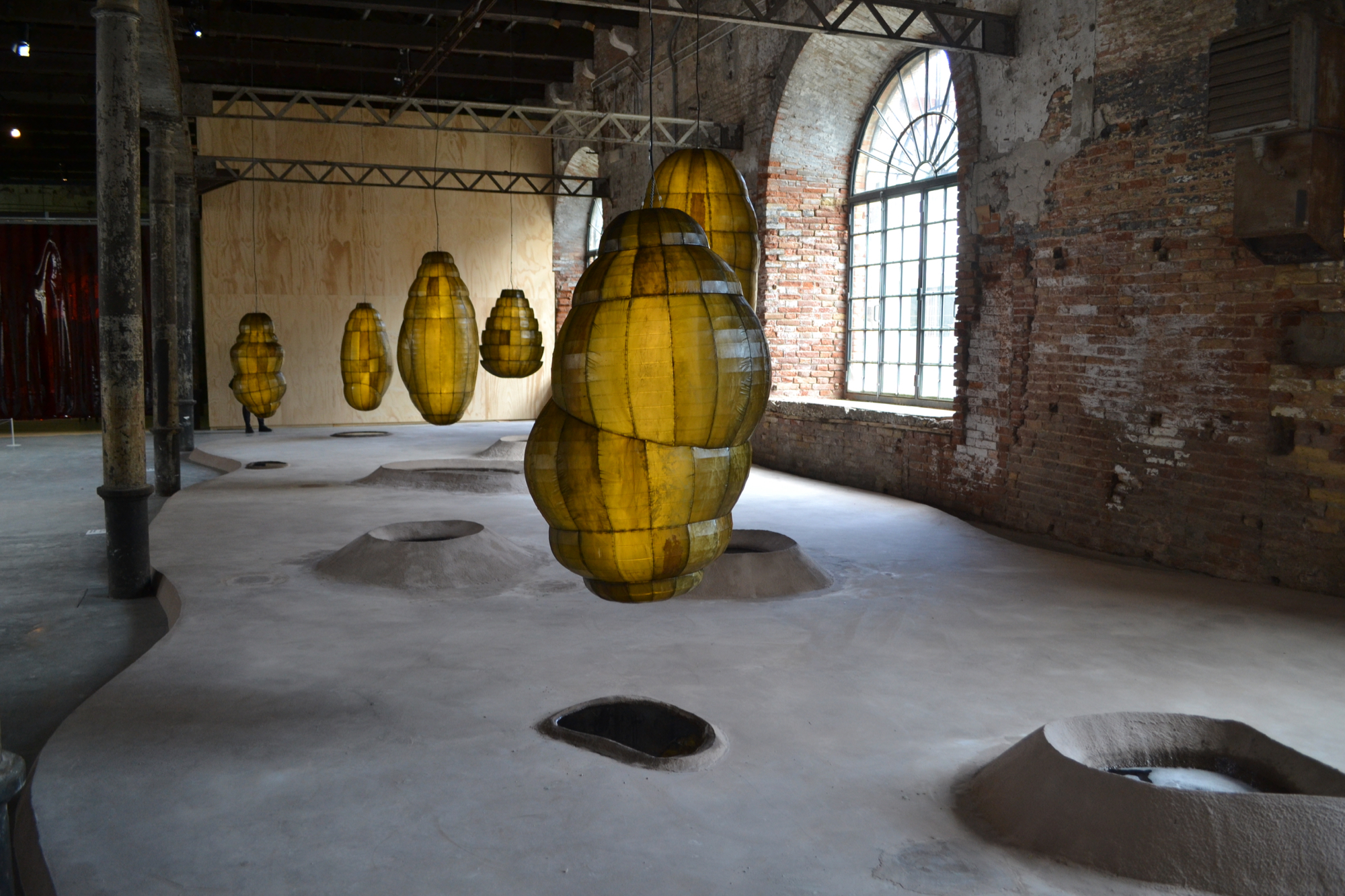
Anicka Yi’s Biologizing the Machine (tentacular trouble), 2019, in “May You Live in Interesting Times” in the Arsenale.
ALL PHOTOS: ANDREW RUSSETH/ARTNEWS
The Venice Biennale has officially begun. On Tuesday morning, Ralph Rugoff’s main exhibition, “May You Live in Interesting Times,” swung open its doors, along with dozens of national pavilions in the sylvan Giardini, the historical base of the show, and the Arsenale, the dockyards that helped build Venice’s empire. All of the roughly 80 artists in Rugoff’s show have work in both locations, in sections he has christened “Proposition A” and “Proposition B.” I started with A.
It’s too soon for a review, so here are a few notes and a boatload of photos. Rugoff has divided up the sizable Arsenale in several places with raw wood, making it almost labyrinthine at times. For the most part, it works. Artists have ample space to breathe, and many gone large with their works. A few wall labels were missing, but by midday a trusty team of workers had affixed most of them, meaning that the Biennale is ready to roll. Below, a look around the Arsenale. Unless a country is noted, the images are from the central show, “May You Live in Interesting Times.”
[See Part 2 of this slideshow, which features work in the Giardini.]
- George Condo’s Two Elvises greeting visitors to “May You Live in Interesting Times.”
- Large prints of photographs by Zanele Muholi are dotted throughout the main exhibition in the Arsenale.
- A neon work by Tavares Strachan, part of a project paying tribute to the first African-American astronaut, Robert Henry Lawrence Jr.
- Photographs by Martine Gutierrez.
- Yin Xiuzhen, Nowhere to Land, 2012.
- Beautiful, quiet portrait paintings by Njideka Akunyili Crosby, who opens a show at Victoria Miro gallery in Venice this week.
- Teresa Margolles’s La Búsqueda—glass panels from the city center of Ciudad Juárez, Mexico, papered with posters of missing women.
- Jesse Darling in the Arsenale.
- One of two superb, sprawling Henry Taylor paintings in “May You Live in Interesting Times.”
- A partial installation view of paintings by Jill Mulleady, The Fight Was Fixed.
- Three sculptures by Nicole Eisenman. One of them is a fountain.
- A self-portrait by Mari Katayama.
- Kaari Upson, THERE IS NO SUCH THING AS OUTSIDE, 2017–19—a wild installation-stage-set-sculpture-video extravaganza.
- Otobong Nkanga, Veins Aligned, 2018, which measures more than 70 feet long, stretching down the Arsenale.
- Paintings by Julie Mehretu.
- Alex Da Corte’s Rubber Pencil Devil, a star of the 2018 Carnegie International, is on view in the Arsenale. It’s worth every moment you can spend with it; I recommend setting aside a couple hours.
- An untitled 2019 Michael E. Smith sculpture made of chairs and dreadlocks.
- Liu Wei, Microworld, 2018—a modernist fantasty hiding behind glass.
- Work by Haris Epaminonda.
- Videos of Palestinian protesters crossing into Israel, presented by Lawrence Abu Hamdan, looking onto photographs of Israeli border walls by Rula Halawani.
- Paintings by Michael Armitage.
- Ad Minoliti, Cubes, 2019.
- A truly bonkers set of sculptures by Handiwiriman Saputra.
- A sculpture by Arthur Jafa.
- Hiding in plain sight along exterior of the Arsenale are new sculptures by Nairy Baghramian—part corporeal, part architectural, very effective.
- Work by Anthea Hamilton.
- Lara Favaretto sculptures looking onto a batch of Andra Ursuta works.
- A 2019 hanging sculpture by Tomás Saraceno over the water near the Arsenale, part of “May You Live in Interesting Times.”
- Recent paintings by Avery Singer in the Arsenale.
- Halil Altındere’s contribution to the main exhibition.
- Beware, stroboscopic imagery: Ryoji Ikeda’s bewitching data-verse, 2019.
- Nujoom Alghanem is representing the United Arab Emirates with a two-screen film installation titled Passage.
- Zhanna Kadyrova, Market, 2017–.
- Neïl Baloufa, Global Agreement, 2018–19, which converts gym equipment into video-viewing spaces presenting interviews with soldiers from around the world. Do not be like me and hit your head on the sculpture when standing up.
- Danh Vo, All Work, 2009, with work by a variety of collaborators.
- Slavs and Tatars has created a handsome, expansive lounge at the end of the Arsenale section of “May You Live in Interesting Times”—an ideal place to kick back, relax, and enjoy . . . pickle juice. (Regrettably, these libations are not yet available.)
- Work by Cristian Bendayán, who is representing Peru.
- Work by Dineo Seshee Bopape, one of three artists representing South Africa.
- İnci Eviner, representing Turkey. Early in the morning, two performers were slowly climbing along the architectural installation. It looked quite painful.
- Zahrah Al Ghamdi for Saudi Arabia.
- Mark Justiniani for the Philippines.
- Charming, irresistible tempera-on-paper works by Nandalal Bose from 1937–38 in India’s group show.
- Eva Rothschild representing Ireland.
- Mariana Telleria, representing Argentina.
- Paintings by Lynette Yiadom-Boakye in a group show for Ghana’s first-ever pavilion.
- Daiga Grantiņa, representing Latvia.
- Anna K. E., representing Georgia.
- Enrico David works in Italy’s three-person pavilion.
- Joël Andrianomearisoa for Madagascar’s first Venice pavilion.
- Fei Jun’s Interesting World in China’s group show.
[ad_2]
Source link


